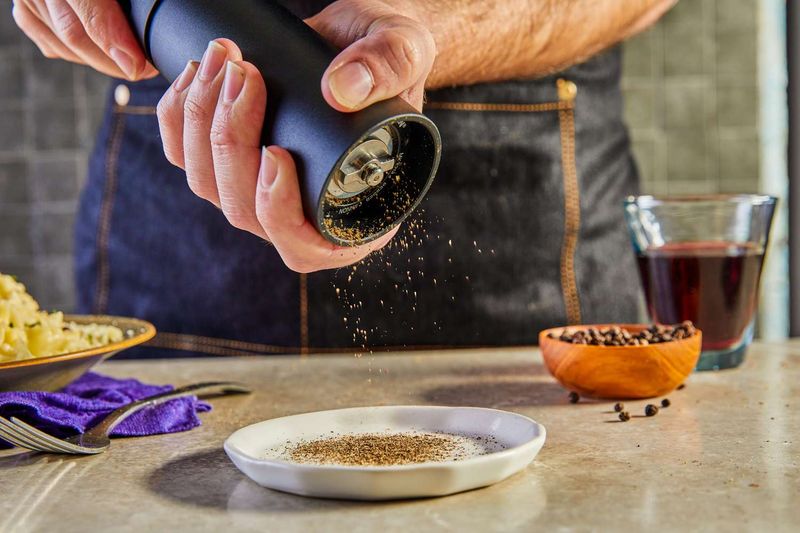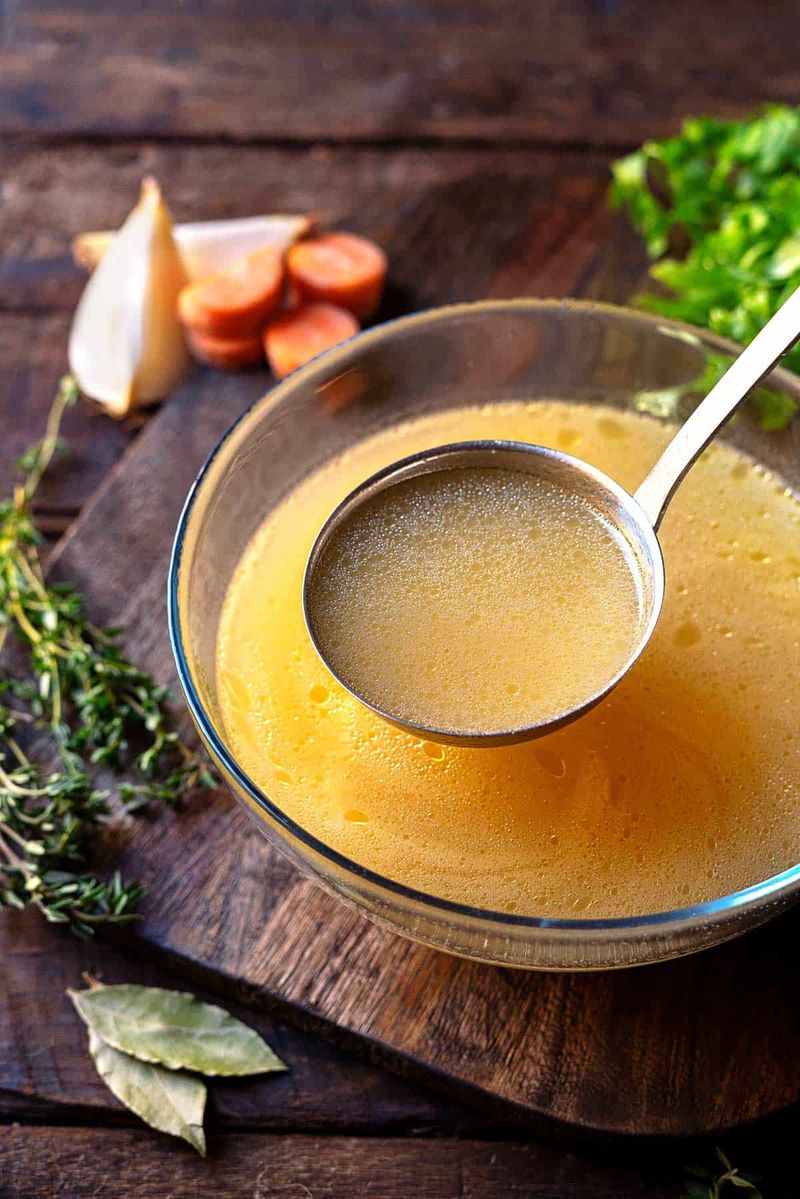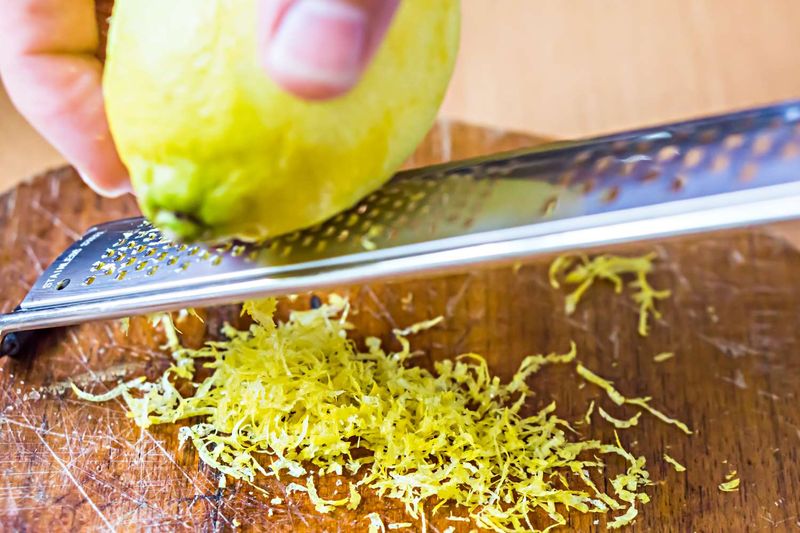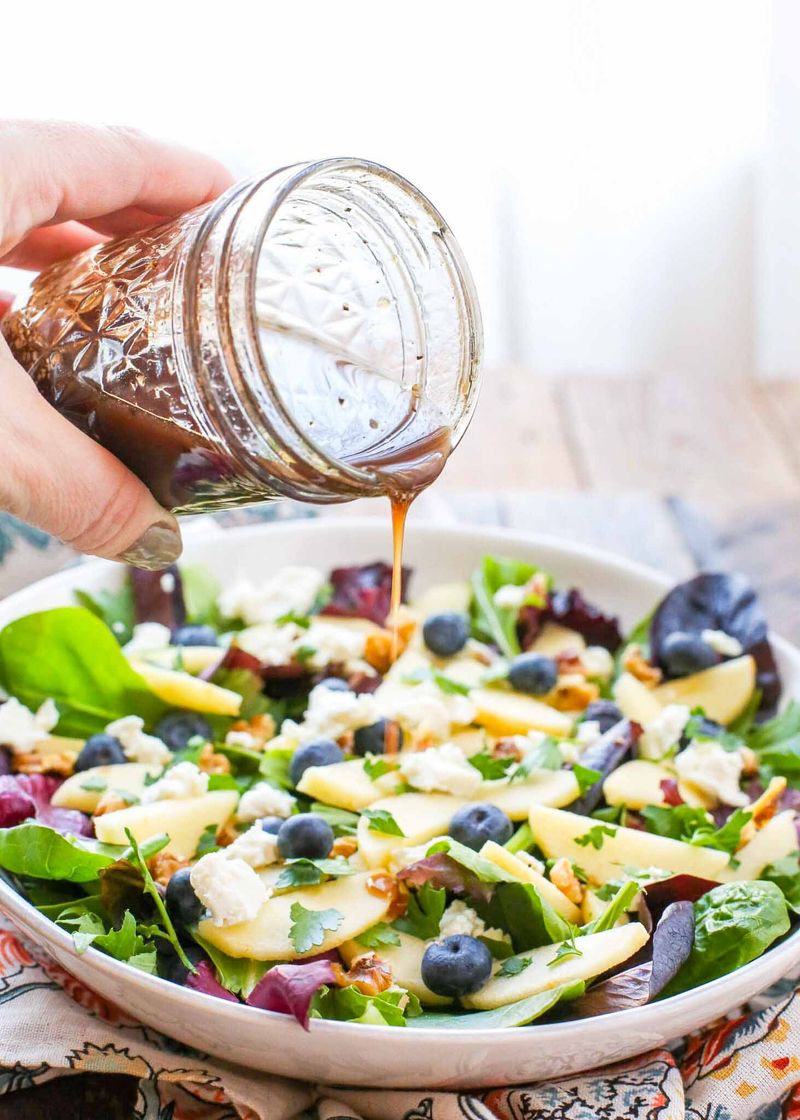Ever feel like your home-cooked meals are missing that “wow” factor? You’re not alone—and the good news is, you don’t need fancy gadgets or culinary school credentials to fix it.
Sometimes, the secret to unforgettable flavor lies in the smallest changes. From how you season to what you slice with, a few smart kitchen tweaks can completely transform the way your food tastes (and how much you enjoy making it).
Whether you’re a weeknight warrior or a weekend gourmet, these 12 game-changing techniques will help you cook like a pro—no chef’s hat required.
1. Freshly Ground Spices

Imagine the aroma of freshly ground spices wafting through your kitchen. This simple tweak can elevate a dish significantly, enhancing both aroma and taste. Pre-ground spices, often losing potency, don’t hold a candle to the vibrant flavors of freshly ground versions.
Investing in a mortar and pestle or an electric grinder can be the first step towards more flavorful dishes. Crushing spices right before use releases essential oils, intensifying the dish’s overall impact.
Try it with coriander or cumin seeds, and you’ll notice the difference immediately. With every grind, you unlock a spectrum of flavors that pre-packaged spices can’t match. If you’re a fan of curries or spice-rich dishes, this is a game-changer. Soon, your kitchen will be your favorite spice shop.
2. Herb Infused Oils

Herbs add freshness, but have you tried herb-infused oils? They offer a concentrated burst of flavor, perfect for drizzling over salads, pastas, or grilled vegetables. Plus, they’re an easy way to preserve herbs that are starting to wilt.
Creating your own infused oils is simple—warm olive oil on the stove, add a handful of your favorite herbs, and let it steep. Rosemary, basil, and thyme are popular choices, each adding its unique twist.
Store in a glass bottle and use as a finishing touch on dishes. Not only does it enhance the taste, but it also adds a gourmet touch to everyday meals. The next time you’re cooking, reach for your homemade herb-infused oil and experience the transformation.
3. Homemade Broth

Store-bought broths are convenient, but nothing beats the depth of flavor in homemade broth. Simmering bones, vegetables, and aromatic herbs for hours extracts flavors that create an unparalleled base for soups and stews.
Homemade broth is rich in nutrients and free from preservatives, unlike many store-bought versions. It’s also versatile—use it in risottos, sauces, or simply sip it as a warm beverage.
By using leftover vegetables and bones, it’s economical as well. Once you start making your own broth, you’ll find the store-bought ones pale in comparison. This little tweak will make you wonder why you didn’t start sooner.
4. Proper Knife Skills

Ever noticed how professional chefs chop ingredients effortlessly? Proper knife skills are not just about speed but also precision, allowing for even cooking and enhanced flavor absorption.
Learning to dice, julienne, or mince accurately can transform your cooking experience. Start with the basics—holding the knife correctly, ensuring it’s sharp, and practicing various cuts.
With time, you’ll find cooking more enjoyable and efficient. Not to mention, well-chopped vegetables cook evenly and look aesthetically pleasing. Investing in a quality chef’s knife and honing your skills could be the game-changer your kitchen needs.
5. Seasonal Ingredients

Using seasonal ingredients isn’t just a trend; it’s a way to ensure maximum flavor and nutrition. Seasonal produce is harvested at its peak, offering vibrant flavors that out-of-season varieties can’t match.
Visit local farmers’ markets to explore what’s in season. You may discover new ingredients that inspire creativity in the kitchen. Seasonal cooking also supports local farmers and reduces your carbon footprint.
Try crafting menus around the seasons, celebrating the freshest produce available. Your taste buds will thank you for the burst of genuine, intense flavors.
6. Resting Meat

Patience is a virtue, especially when it comes to resting meat after cooking. Allowing meat to rest before slicing ensures the juices redistribute, resulting in a more flavorful and juicy dish.
While it’s tempting to cut into that sizzling steak immediately, waiting for a few minutes can make all the difference. This rule applies to all meats, from poultry to beef and even fish.
The science behind it is simple: resting allows the muscle fibers to relax, retaining moisture. The outcome is a more tender bite, rewarding your patience with each savory mouthful.
7. Finishing Salts

Salt is the backbone of flavor, but have you tried finishing salts? These coarser, often flavored salts can enhance the texture and taste of a dish when sprinkled just before serving.
Experiment with different varieties like smoked or Himalayan pink salt. Each type offers unique flavor profiles that can elevate your meal to new heights.
Using finishing salts engages your senses, adding a final touch that brings out the flavors of the main ingredients. The next time you cook, reach for finishing salts to surprise your palate.
8. Citrus Zest

Zest isn’t just for looks; it’s a flavor powerhouse. The outer peel of citrus fruits like lemons, limes, and oranges contains oils that can brighten and lift the flavors of any dish.
Sprinkle zest over salads, desserts, or grilled meats for a burst of freshness. It pairs exceptionally well with seafood, enhancing its natural flavors.
Incorporating zest is simple: use a microplane or zester to scrape the colorful part of the peel, avoiding the bitter white pith. This tiny tweak can transform your culinary creations, adding a refreshing twist.
9. Marinating Proteins

Marinating proteins isn’t just about adding flavor; it’s about texture too. A good marinade can tenderize meat, making it more succulent and flavorful.
Crafting the perfect marinade involves balancing acids, fats, and seasonings. Use ingredients like vinegar, oil, garlic, and herbs to create complex layers of taste.
Allow enough time for the marinade to work its magic—overnight if possible. You’ll notice the difference in how the meat absorbs flavors, becoming a juicy centerpiece for any meal.
10. Homemade Dressings

Store-bought dressings are convenient but often lack the vibrant taste of homemade versions. By making your own, you can control the balance of flavors and create a dressing tailored to your liking.
Start with a simple vinaigrette: mix olive oil, vinegar, mustard, and herbs. Adjust the ingredients to suit your palate, experimenting with different oils and acids.
Creating homemade dressings opens a world of possibilities, allowing you to reinvent salads and other dishes. Your meals will boast a bespoke taste that bottled dressings can’t offer.
11. Toasting Nuts and Seeds

Toasting nuts and seeds may seem minor, but it’s a game-changer. The process intensifies their flavor and adds a satisfying crunch to dishes.
Use a dry skillet or oven to toast them lightly, releasing their natural oils and aromas. This tweak is perfect for salads, desserts, and even savory dishes, offering an extra layer of flavor.
Whether you’re working with almonds, sunflower seeds, or pine nuts, toasting is a simple step that can elevate your meals remarkably. Once you start, you’ll find it hard to go back to their raw counterparts.
12. Balancing Acidity

Achieving the right acidity balance can transform a dish. Too much acid, and it overwhelms; too little, and the flavors fall flat. Acidity brightens dishes, enhancing the other flavors present.
Experiment with different acidic ingredients like vinegar, lemon juice, or tamarind. Adjusting acidity can make a dish sing, from soups to sauces to salads.
Taste and tweak as you go, striving for harmony. This attention to detail can turn a good dish into a great one, making it memorable for anyone who tastes it.
Leave a comment